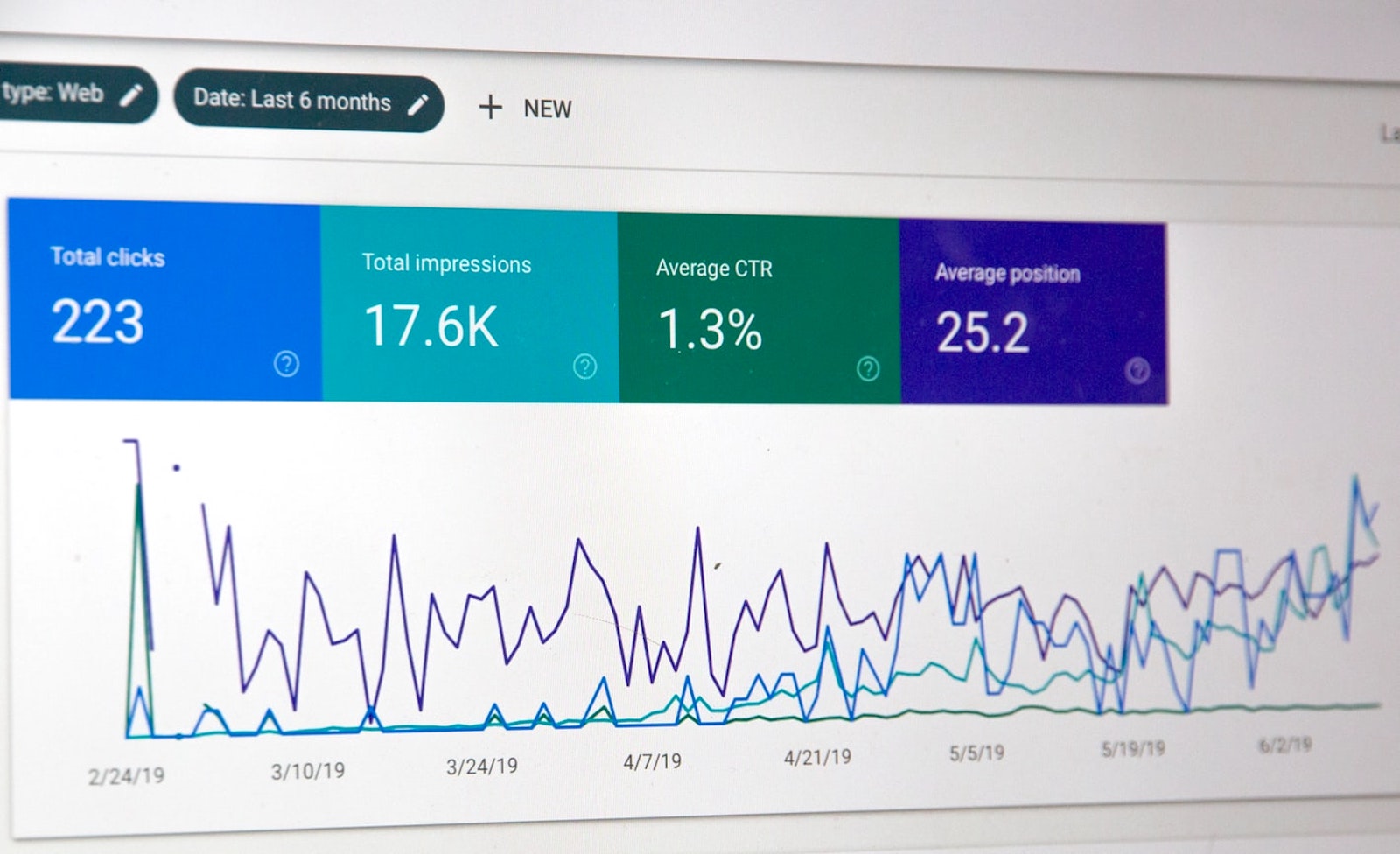Table of Contents
** Minutes
The holiday season is a goldmine for ecommerce shops
When should I start planning my ads?
Running holiday Google and social media ads
Don’t forget about Black Friday/Cyber Monday
If you play your cards right, your business’ digital marketing strategy can help ensure a successful holiday shopping season this year. Putting in a little bit of work now can result in more sales over the coming months than you ever could have expected.
Consider the topics covered in this article when you start devising your holiday game plan.
The holiday season is a goldmine for ecommerce shops
Ecommerce businesses of all shapes, sizes, and industries look forward to the increase in sales that come every holiday shopping season. Because so many purchases are made online during this time of year, businesses feel a lot of pressure to get their names and products out in front of consumers.
There are many reasons why ecommerce companies need to take the holiday season seriously, here are just a few.
High demand for gifts
The holidays are all about surrounding yourself with the ones you love. And to show appreciation for these loved ones, many try their best to find the perfect gift. Businesses who do a good job highlighting their products online will see how an increase in demand translates to an increase in web traffic.
Large volume orders
More so than any other time of year, the holiday season tends to spur larger order volumes. Holiday shoppers looking to buy several gifts for their family and friends can positively impact average order value. If shoppers have a lot of people to buy gifts for, they are most likely going to try and buy from a few of the same stores.
Sales are frequent
If you’re looking for an opportunity to make room for new inventory, consider running a sale over the holiday shopping season. People love finding deals this time of year, so do what you can to run some type of product promotion, because your competitors might be doing the same.
When should I start planning my ads?
While there isn’t a definite answer to the question of when businesses should start planning their ad strategy, you’ll want to get started at least a month ahead of time. According to ShipBob’s 2019 ecommerce data, holiday shopping may start earlier than you think. Many businesses start as early as September to give themselves two months to finalize ad designs and their campaign strategy.
Keep it top of mind that it’s generally easier to get aggressive early on and remain in top positions than to make an attempt to catch up with an advertiser who has already secured the top positions already. Plan to raise bids earlier than you feel like you should.
There can be a first-mover advantage on Google Ads. By being aggressive early on, you’ll be able to capture more audience data that you can use for remarketing and RLSA bidding later in the season.
If you’re looking to promote your business online this holiday season, you should consider the different advantages each ad platform brings.
Running holiday Google and social media ads
Digital marketing can help make this holiday shopping season a massive success for your business. Between running ads on Google and promoting posts on social media, there are many options for you to choose from when designing your business’ marketing strategy.
Google Ads for the holidays
If you’re trying to get your business in front of holiday shoppers, look no further than Google Ads. Keep the following topics in mind when creating your campaigns to get the most out of your Google Ads data.
Google Shopping product segmentation
To ensure maximum account efficiency, build your campaigns and ad groups granularly. Bucket your products into campaigns that make sense, based on your business or particular industry. For example, you could break them into campaigns by brand, product category, or application.
From there, you should place every product in your campaigns into its own ad group. This level of granularity enables not only complete control over bids and negative keywords, but it also gives you insight into what customers are actually buying.
When it comes down to it, having anorganized Google Ads account is crucial to the future success of your campaigns. Grouping your campaigns by similar products also simplifies holiday shopping bidding because you can raise and lower bids at the campaign level.
And since the holiday shopping season is so competitive, you may need to alter bids multiple times per day. If you see a product performing poorly, simply bid it down while you work on a new strategy for that particular product.
Separating your products into their own ad groups gives you a better understanding of where your advertising budget is going and how you could possibly better allocate that budget. Tracking product ad performance throughout the holiday season is essential for recognizing not only what people are searching for but what people are buying.
Attributing sales to keywords and ads
Based on the settings in your account, Google draws connections to give credit for each conversion that you record on your website. Examining the data that is collected and stored in your account, alongside which attribution models you are using, will let you know how your keywords are performing.
By reviewing how Google gives credit to your sales, you may come across some common inaccuracies that are often overlooked in this process. Among the six models Google uses, “last click” is the most utilized. The “last click” attribution model gives all credit for a conversion to the keyword/ad that was clicked last before a conversion occurred.
When optimizing your shopping campaigns throughout the holiday season, know that Google Shopping more so influences sales rather than closes sales. You can’t solely rely on Google Analytics default reporting to determine how your Google Shopping campaigns are performing. Use a multi-channel funnel attribution (MCF) report in Google Analytics to make sure you are appropriately accrediting Google Shopping clicks.
The easiest comparison is to look at is “first click vs. last click.” Contrary to “last click,” the “first click” attribution model credits the ad click that begins the sale process but is closed by another. The revenue from any “first click” conversion are not shown in the default attribution report in Google Analytics, and is therefore regarded as if those clicks were not involved in the sale at all.
The “last click” method of assigning credit is effective in measuring ad effectiveness to a certain extent, but ignores the reality that a customer might engage with multiple ads associated with a variety of keywords before taking the plunge and making a purchase.
By analyzing other attribution models in the MCF report you find in your Google Analytics account, you can see a more complete picture of what your customers’ paths to conversion look like.
Social media ads
Is your business struggling to gain new customers simply because not many people have heard of your brand? If so, now is the perfect time to start a brand awareness campaign on a social media platform. Paid social ads are a great way to spread the word about your business and products to people who are in your targeted audience.
Facebook not only has a fantastic array of choices for ads but you can also get very specific with your demographic targeting. Consider how a few holiday themed posts could elevate your brand image over the coming months.
Ads that users come across while watching Instagram stories could be an effective starting point for your business. Combine these with sponsored posts to drive additional traffic to your site this holiday season.
Kick off your holiday ad campaign by sponsoring a hashtag with promoted trends. Connect further with your audience with a promoted video and accompanying message. There are a number of ad formats to choose from, so find the option that works best for your business.
Advertise your shipping
Do you have a 3PL or logistics partner you work with? If so, you shouldn’t underestimate the selling power your product shipping guarantees hold. Let’s say your business has a streamlined process and can get products to customers quicker than your competitors can. There are definitely ways to make shipping a part of your ecommerce marketing strategy.
Push a “don’t miss out” campaign
Communicating urgency to potential customers can really help drive additional last-minute sales. This type of campaign is probably going to be the last one you run over the holiday season, so you should really make it count.
Send emails detailing your final shipping times
To avoid disappointing any customers, your business needs to clearly communicate final shipping dates before important holidays. Consider sending a reminder email or, even better, prominently feature the cutoff date on your website.
Offer 2-day shipping
Not every shopper gets started on holiday shopping right when the season begins. In fact, many will hold off on shopping till the last minute. If you are able to facilitate it, include that your business provides 2-day shipping options to these customers who get a late start.
Don’t forget about Black Friday/Cyber Monday
Black Friday and Cyber Monday are two busiest holiday shopping days for holiday shopping. These holidays help ecommerce shops in big ways, so it’s imperative that businesses nail down unique strategies to make as many sales as possible.
The day after Thanksgiving, aka Black Friday, is the unofficial start of the holiday shopping season. If your business is looking to push more sales this year, you need to kick things off with a bang. While Black Friday focuses more on brick-and-mortar retail, Cyber Monday, the Monday following Thanksgiving, is exclusively for ecommerce companies. It is on this day that people go online to find this year’s must-have gifts.
Running sales or special flash sale on these days can get people into your stores and onto your website. Utilize language that instills a sense of urgency, like “One Day Only” or “Limited Time Offer.” If people are aware that they are getting a good deal, they are more likely to make a purchase.
ShipBob makes the holidays easy
The holiday season is stressful enough, but running a business on top of that can turn even the jolliest of fellows into a Scrooge. If you’re looking to make things go smoother, consider partnering with ShipBob to alleviate some of your stress during all the holiday madness.
2-day shipping
ShipBob offers clients a seamless 2-day shipping order fulfillment guarantee to strengthen and improve the customer purchasing experience. This is a benefit you can offer your customers if they buy your products over your competitor’s. And with the holiday season in mind, businesses should use any and all benefits they have to their advantage when advertising.
Nationwide warehousing
ShipBob has a network of fulfillment centers in large cities all across the United States. And since they are responsible for maintaining and storing inventory, you can rest assured knowing ShipBob has a strategy in place to reduce shipping costs and transit time.
Return management, simplified
Using the services of a company like ShipBob makes every aspect of shipping easier. ShipBob makes return labels available for all their shipments, simplifying this process for their clients. They do all the necessary processing and documentation to get these products back into inventory as quickly as possible.
Ready to tackle the holiday season?
Are you inspired to make this holiday season the most profitable for your business yet? Help your business end the year on a good note by solidifying your holiday shopping ad strategy sooner, rather than later.
With a strong Google Shopping game plan, a few paid social campaigns, and the support of a shipping logistics company like ShipBob, your company should have no trouble coming out on top this holiday season.
Following the advice in this article is a great first step, but if you’d like further guidance, feel free to reach out to me for a complementary digital marketing consultation.
For tips on holiday fulfillment do’s and don’ts, check out ShipBob’s guide on 9 Ways to Not Mess Up Your Holiday Logistics.
Happy Holidays!



